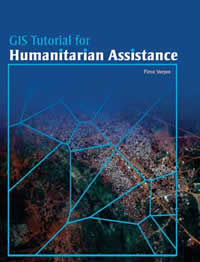ArcUser Online
Spring 2011 Edition
A Practical Guide
Tutorials for humanitarian relief
This article as a PDF.
 Author Firoz Verjee wrote this book to encourage the establishment of formal GIS programs for humanitarian nongovernmental organizations (NGOs). For more than 16 years, Verjee has specialized in the application of remote sensing and GIS, primarily within the fields of disaster risk reduction and humanitarian assistance.
Author Firoz Verjee wrote this book to encourage the establishment of formal GIS programs for humanitarian nongovernmental organizations (NGOs). For more than 16 years, Verjee has specialized in the application of remote sensing and GIS, primarily within the fields of disaster risk reduction and humanitarian assistance.
GIS is an essential tool for situational awareness to improve the flow of goods and services to populations at risk. GIS Tutorial for Humanitarian Assistance focuses on the specific skills needed to support emergency relief efforts, with an emphasis on finding, importing, and managing spatial data in regions with poor infrastructures.
The book begins where introductory books that teach general GIS theory and practice leave off. Exercises in this text incorporate specific scenarios and provide strategies for meeting challenges that humanitarian agencies might likely face. For example, chapters deal with topics such as generating spatial data during emergencies or improving the design and operation of refugee camps.
These tutorials also work well for intermediate and advanced college-level coursework or self-study. "This book provides the core skills necessary to realize the full potential of GIS in humanitarian assistance," according to Verjee. "It builds on the recent experience of leading GIS practitioners from around the world and establishes some basic doctrines for the analytic applications of ArcGIS software during humanitarian operations."
Verjee is a senior research associate at the Institute for Crisis, Disaster, and Risk Management at George Washington University in Washington, D.C. He also coordinates Aga Khan Development Network Seismic Risk Management Initiative, based in Dushanbe, Tajikistan. The book includes a 180-day trial of ArcGIS Desktop 9.3.1 software on DVD. A CD with data for the exercise is included. Esri Press, 2010, 380 pp., ISBN: 978-1589482135